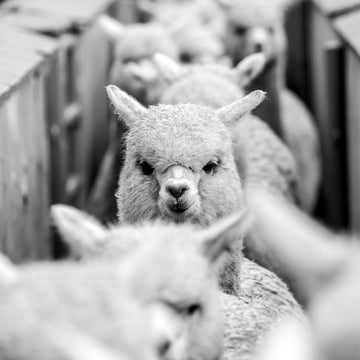THE WORLD OF ALPACA
The alpaca, an ancient domestic animal essential to Andean history and economy, only began to be globally recognized in the second half of the 20th century outside of South America. Originally from the Peruvian highlands, this species has a limited understanding of its genetics today, despite its crucial role in the development of pre-Columbian cultures.

During the Inca Empire, the alpaca was a central piece, providing the material for textiles that clothed millions and served as currency. However, the arrival of the Spanish displaced the alpacas to more arid terrains, taking them up to 4,000 meters above sea level, making them the exclusive sustenance of communities in the mountains, where the daily temperature variation can exceed 35 degrees, favoring the development of a fiber with exceptional thermal properties.
In addition to its incomparable softness, known in the textile industry as "la mano", alpaca is distinguished by its resilience and wide range of natural colors, offering a sustainable alternative to artificial dyeing, taking on special relevance in the face of climate change, which directly affects its Andean habitat. Alpaca, with its ability to adapt and low ecological impact, emerges as a symbol of sustainability.

In this sense, the Inca Group takes on the challenge of preserving and promoting the alpaca enthusiastically, in order to improve sustainable practices, develop higher quality textiles and ensure fair compensation for those who keep the tradition of this noble animal alive. Our commitment not only encompasses genetic improvement and textile innovation, but also the recognition of the value of the work of the Andean communities.
Find out more about our effort to share the history and benefits of alpaca with the world at www.grupoinca.com and find the best products at KUNA: pe.kunastores.com








